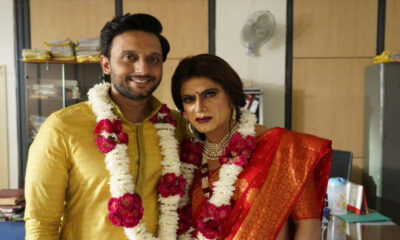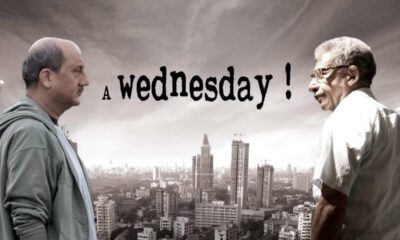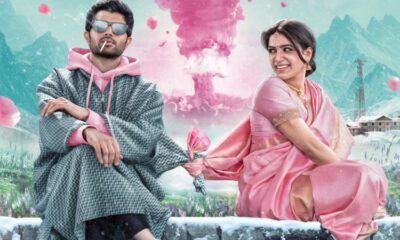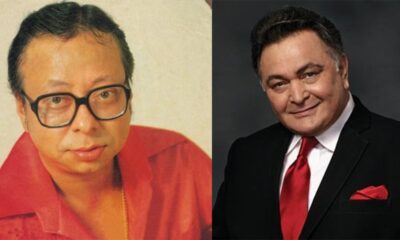Bollywood News
Holi An Excuse For Vulgarity In Our Cinema!
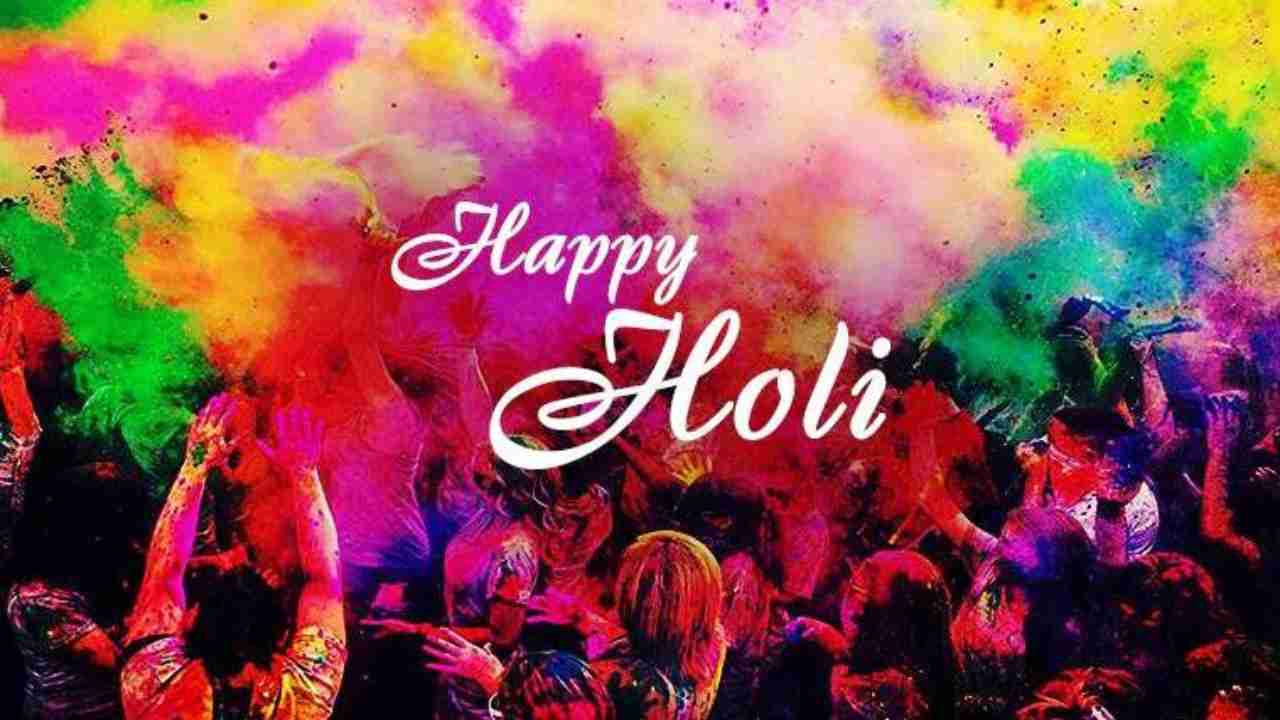
Remember the good ol’ days when the only way a filmgoer would see any kind of sexual undercurrent in a movie was during the Holi song? The ubiquitous feature of Bollywood in the cinema of the sixties and the seventies, acted as a legitimate excuse for filmmakers to show drenched women in white heaving bosoms on screen with the heroes.
With lovemaking scenes no longer a taboo in Hindi cinema, and heroes and heroines going boldly where their coy predecessors refused to tread, Holi songs have become as redundant as flowers that came together to camouflage a kiss.
Ketan Mehta, who made a film called Holi, feels, “Holi is a festival of colours, exuberance and sensuality. I can watch Rang Barse in Silsila and Ja Re Hat Natkhat in Navrang forever. In cinema it’s been like a mating dance. Movies don’t need festive excuses any more to portray sexual undercurrents.”
Writer Shibani Bathija, who penned Kabhi Alvida Na Kehna and My Name Is Khan, says Bollywood today needs no excuse for titillation. “Holi is a colourful, interactive visual. Earlier, the extent to which heroines would willingly expose was limited.
Holi and the rain were pretexts to circumvent the flesh embargo. Nowadays there are no such inhibitions. But I miss a Holi song like Rang Barse. It is an example of perfect screenplay. Great drama implied on and off screen and the folk flavour of the song was so authentic.”
Writer-director-actor Saurabh Shukla believes, “Earlier, Holi songs provided colour, vibrancy and sensuality. I guess item songs have replaced Holi songs.” Filmmaker Amole Gupte agrees Holi did provide a pretext for titillation. “Women in white all drenched is what the men of this sex-starved land have on their minds on Holi day.
My favourite Holi song in a film is, Aaj Na Chhodende in Kati Patang where Rajesh Khanna didn’t even touch the heroine Asha Parekh.” Recalling the shooting of that Holi song Asha Parekh says, “It was a very sensitive number.
I played a widow who stood her ground when the hero and his friends wanted to drench her in Holi colours. At the end of the song he did throw colours in my hair to express his determination to marry the widow. The Holi sequence was a turning point in the script.”
Ken Ghosh feels Holi was definitely used for titillation in some songs. “But that is a thing of the past. Today, filmmakers don’t use Holi sequences. They were done to death at one time. I’d love to see something like Rang Barse on screen again.” Adds writer-lyricist Prasoon Joshi, “Why blame our films for using Holi songs as titillation? We should go back to our culture. Sexual undercurrents were always a part of Holi celebrations.”
However, not everyone agrees that the Holi songs were purely a vehicle for legitimate titillation. “You have to admit women look sexy when drenched!” says Divya Dutta. “Songs and dances with colours might make a good foundation for a celluloid Holi. But I wouldn’t call it a pretext. Sadly Holi songs are not shot in our films any longer. Maybe because Holi is not celebrated with the same fervour in real life as it used to be. I am hoping it would return in our movies.”
The thought that the lack of Holi songs is because of a change in traditions off screen is echoed by Shantanu Moitra. The music composer feels festivals per se have become redundant in present day context. “Environmental consciousness, no gulaal, no gubaara, no collective celebration as the nuclear family uses Holi as an occasion for a vacation… the romance of Holi is gone.”
Adds Vipul Shah whose films Waqt and Action Replayy featured Holi songs, “Holi is an occasion to display our festivity. Today, our cinema is becoming Westernised, so certain elements from our culture are not showcased.” Filmmaker Suneel Darshan feels Holi songs were a lot of fun. “They often carried the narrative forward. But that’s in the past. Tradition and culture are not high priority in our films any more.”
The festival may have sexual undercurrents, but that doesn’t mean Holi sequences are a deliberate attempt to show sexuality on screen, feels a section of B-towners. Shabana Azmi thinks imputing lascivious suggestions on Holi is too harsh. “Drenching both men and women has been a tradition over centuries. There is abandon and gaiety associated with Holi.
It’s all done for fun. And very infectious. Morey Kanha Jo Aaye Palatke from Sardari Begum, written by my husband Javed Akhtar, is my favourite. The lines: ‘Unke peeche main chupke sa jaake/Yeh gulaal apne tan pe lagaake/Rang doongi unhein main lipatke…’ are very saucy, sensual and show the woman as an active participant and not a passive recipient of pleasure.”
Filmmaker Bhavna Talwar does not see overt sexuality in Holi songs. “While it may be true in some cases, most Holi sequences were wonderfully aesthetic. In Sholay, the use of Holi colours in contrast with the Thakur’s widowed daughter-in-law’s colourless life is still vivid in my mind. Would you say Holi Aaye Re Kanhaai in Mother India or Mohe panghat pe nandlal in Mughal-e-Azam were aimed to titillate?” She does believe that the festival itself is, “Inherently sensual. Rang Barse captured the sensuality with utmost decorum. I don’t know why our films don’t have Holi songs any more. They should.”
Agrees Khushboo, “I don’t see Holi as an excuse to drench heroines. In Rang Barse in Silsila and Holi Ke Din in Sholay where is the titillation?” Adds Lilette Dubey, “I don’t think Holi songs were done to drench heroines. There were waterfall scenes for that! I think they were genuinely sexy/masti bhari songs imbued with the flavour and spirit of bhang and Holi. Being from the North, I loved those Holi songs and I miss them sorely. My favourite is Range Barse. That slow sonorous Brij style song and the contrast provided by the frenzy of colours…wow!”
For Tigmanshu Dhulia, Holi songs are all about fun. “No ritual, no religious relevance, no titillation. Just fun.” Calling Holi sequences a pretext for skin show is unfair, says Urmila Matondkar. “I have never been a Holi person, but Holi songs and sequences have always been my favourite. To say they are a pretext for obscenity would be unfair.
Songs like Rang Barse capture the exuberance, madness and festivity in Bollywood style.” Agrees Umesh Shukla, director of Oh My God, “I loved the sequence in Silsila after the Holi celebration between Jaya Bachchanji and Sanjeev Kumarji where the word ‘colour’ was used to define relationships.”
Holi remains a festival of colours for filmmakers R Rajamouli and Aanand Rai. “I never thought of Holi as titillation. It’s the colour and celebration that attracts me as a filmmaker,” says Rajamouli. Aanand Rai, whose forthcoming love story Raanjhana, set in Varanasi, has a Holi number, laments, “We really don’t have a culture of Holi songs anymore. The splash of multi-coloured abeer (dry colours) can be a truly intoxicating visual.”
Sanjeev Darshan says he can never forget the Holi songs from Mehboob Khan’s Aan, Shakti Samanta’s Kati Patang and Ramesh Sippy’s Sholay. “I’d love to bring back the Holi song in our films,” he says. Rai is doing that with Raanjhana and it seems Deepika Padukone will be seen playing Holi in Ayan Mukerji’s Yeh Jawaani Hai Deewani, with Ranbir Kapoor. Maybe these attempts filmmakers will resuscitate the trend.
Almost every B-towner’s favourite Holi song is Rang Barse. Amitabh Bachchan, whose father Harivanshrai Bachchan had written the song, and who had sung it in Silsila recalled how the song became a part of the film. “That’s a legacy of my father. I learnt of this song through him. I used to sing Rang barse and Mere angne mein at all the Holi get-togethers at our house. That’s where Yashji (Yash Chopra) and Prakashji (Prakash Mehra) heard these songs, included them into Silsila and Lawaaris and asked me to sing them. So I am in no way instrumental in getting these songs into the movies.”

